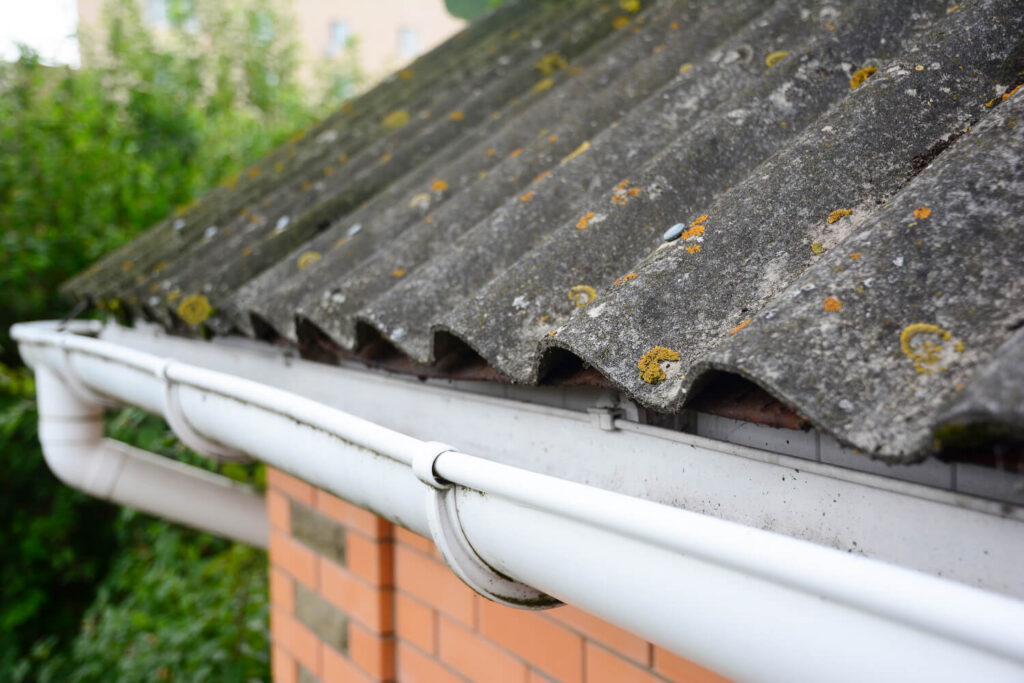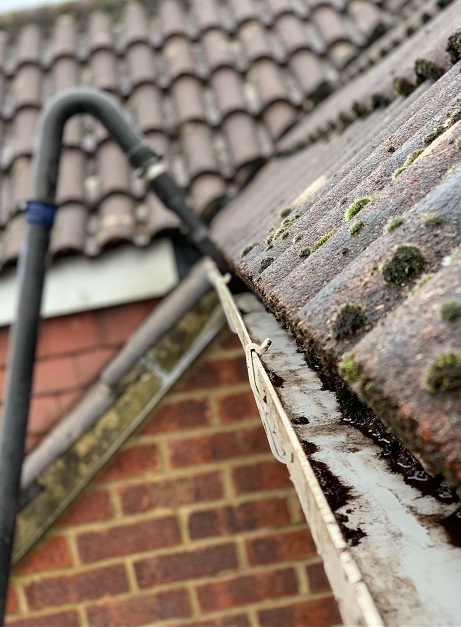Gutters play an essential role in protecting your home from water damage. They direct rainwater away from the roof, walls, and foundation, preventing erosion, flooding, and other costly issues. Over time, however, gutters can wear out due to age, weather conditions, and accumulated debris. While regular maintenance can extend the lifespan of your gutters, there comes a point when replacement is the best option. Knowing the signs that it’s time to replace your gutters can save you from costly repairs and ensure your home remains protected.
Here are some key signs to watch for that indicate it may be time to replace your gutters.
1. Visible Cracks, Holes, or Rust
What to Look For:
One of the most obvious signs that your gutters need replacement is the presence of cracks, holes, or significant rust spots. When gutters develop cracks or holes, they can no longer effectively channel water away from your home, which could result in leaks and water damage to your home’s foundation, siding, or landscaping.
Why It’s a Problem:
Cracks and holes allow water to escape the gutter system and can lead to structural damage. Rust also weakens the integrity of the gutters, making them more likely to collapse or corrode further.
Solution:
If the damage is localized and small, you may be able to patch it temporarily. However, extensive rust or multiple holes throughout your gutters generally means it’s time for a full replacement.
2. Sagging or Pulling Away from the House
What to Look For:
If you notice that your gutters are sagging or pulling away from the fascia (the board that the gutters are attached to), it’s a sign that the gutter system is no longer secure. This can be caused by the weight of debris, water accumulation, or general wear and tear over time.
Why It’s a Problem:
Sagging gutters may not drain water properly, causing water to overflow, seep into the roofline, or pool around the foundation. Over time, this can cause serious damage to your home’s exterior and landscaping.
Solution:
If your gutters are sagging or pulling away, it’s best to have them inspected. In many cases, this is a clear sign that they need to be replaced, especially if repairs or reattachment attempts have been unsuccessful.

3. Water Damage or Staining on Your Home’s Exterior
What to Look For:
Water stains or peeling paint along the sides of your home, particularly near the gutters, can indicate that your gutter system is failing. If your gutters are overflowing or leaking, water may trickle down the walls, leaving behind unsightly stains or signs of rot and decay.
Why It’s a Problem:
Continuous exposure to water can lead to wood rot, mold growth, and weakening of the structural integrity of your walls. Water damage near your gutters is a red flag that the system is not properly managing the flow of rainwater.
Solution:
If you notice significant water damage, it’s crucial to inspect your gutters. Persistent stains or mold around the foundation or siding likely mean that your gutters are no longer functioning properly and may need to be replaced.
4. Gutter Clogs and Overflowing Water
What to Look For:
Clogged gutters are a common problem, especially in autumn when leaves and debris fill up the system. However, if you find that your gutters are frequently overflowing or are difficult to clean out, this could indicate a larger issue, such as the gutters being improperly sized or too damaged to handle the debris buildup.
Why It’s a Problem:
Overflowing gutters can lead to water damage on your roof, siding, and foundation. If your gutters are overflowing regularly, they may be too small for your roof or may have become misaligned, causing water to spill over.
Solution:
Check the size and condition of your gutters. If frequent overflow persists despite regular cleaning and the correct downspout configuration, it’s time to consider replacing the gutters with a larger system that can handle water more effectively.
5. Gutters Are Too Small for Your Roof
What to Look For:
If your gutters are frequently overwhelmed by rain, causing spills and drainage issues, they may be undersized for your roof. This can happen if you’ve added onto your home or your original gutter system was not designed to handle the volume of water that your roof now collects.
Why It’s a Problem:
Small gutters can’t handle large volumes of rainwater, especially during storms or heavy downpours. This can lead to water spilling over the edges, damaging your home’s exterior, and eroding your landscaping.
Solution:
If you notice frequent gutter overflow and it’s clear that your gutters are too small, consider replacing them with a larger gutter system. This will improve water flow and reduce the risk of water damage.
6. Mold, Mildew, or Mosquitoes Around the Gutter Area
What to Look For:
Standing water in clogged gutters can promote the growth of mold and mildew, as well as create a breeding ground for mosquitoes. If you see mold on your gutters or notice an increase in mosquitoes around your home, it’s a sign that water isn’t flowing freely through the gutters.
Why It’s a Problem:
Mold and mildew can damage your home’s siding and contribute to health problems, while stagnant water in gutters can also cause significant deterioration of the gutter system itself. Mosquito infestations can pose a health risk, especially if the stagnant water becomes a breeding site.
Solution:
If cleaning your gutters and installing gutter guards doesn’t solve the problem, it may be time to replace the gutters to eliminate the conditions that are causing the standing water and pests.
7. Gutter System Is Older Than 20 Years
What to Look For:
Gutters typically last around 20 years, but this can vary depending on the material, climate, and maintenance. If your gutters are older than 20 years and are showing signs of wear, it’s time to start thinking about replacement.
Why It’s a Problem:
Old gutters are more likely to develop cracks, rust, and sag. The older the gutters, the more likely they are to require costly repairs or full replacement.
Solution:
If your gutters are nearing or exceeding 20 years of age, schedule an inspection. Consider replacing them before they cause major issues.

8. You’re Remodeling or Upgrading Your Roof
What to Look For:
If you’re planning a roof upgrade or remodeling project, it’s a great opportunity to assess your gutters. When replacing a roof or expanding your home, your current gutter system may no longer be sufficient to handle the new roof size or water flow.
Why It’s a Problem:
A newly installed roof could create more runoff, leading to frequent gutter overflow or water damage. Old gutters may not align with the new roofline, causing drainage issues.
Solution:
If your roof is being upgraded or expanded, consult a professional about installing new gutters to match the roof’s needs. This will help ensure proper water management and protect your investment.
Final Thoughts
Gutters play a vital role in protecting your home from water damage, but they aren’t built to last forever. If you notice any of the signs mentioned above—such as cracks, sagging, water damage, or frequent clogging—it may be time to replace your gutters. Replacing gutters before they fail can save you from expensive repairs and help protect your home’s foundation, walls, and landscaping from water damage. Always consult a professional gutter installer to ensure your new system is properly sized and installed to meet your home’s specific needs.

